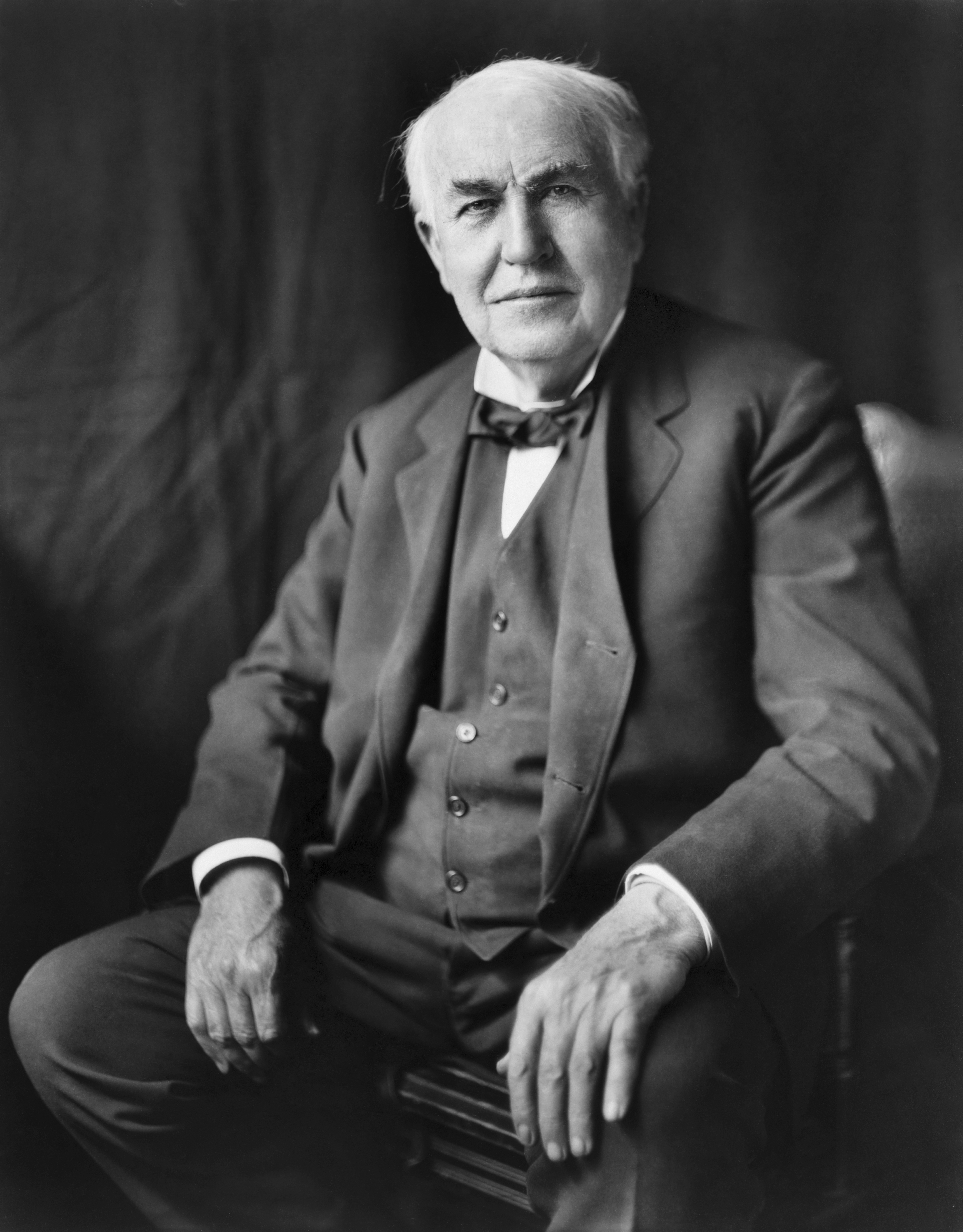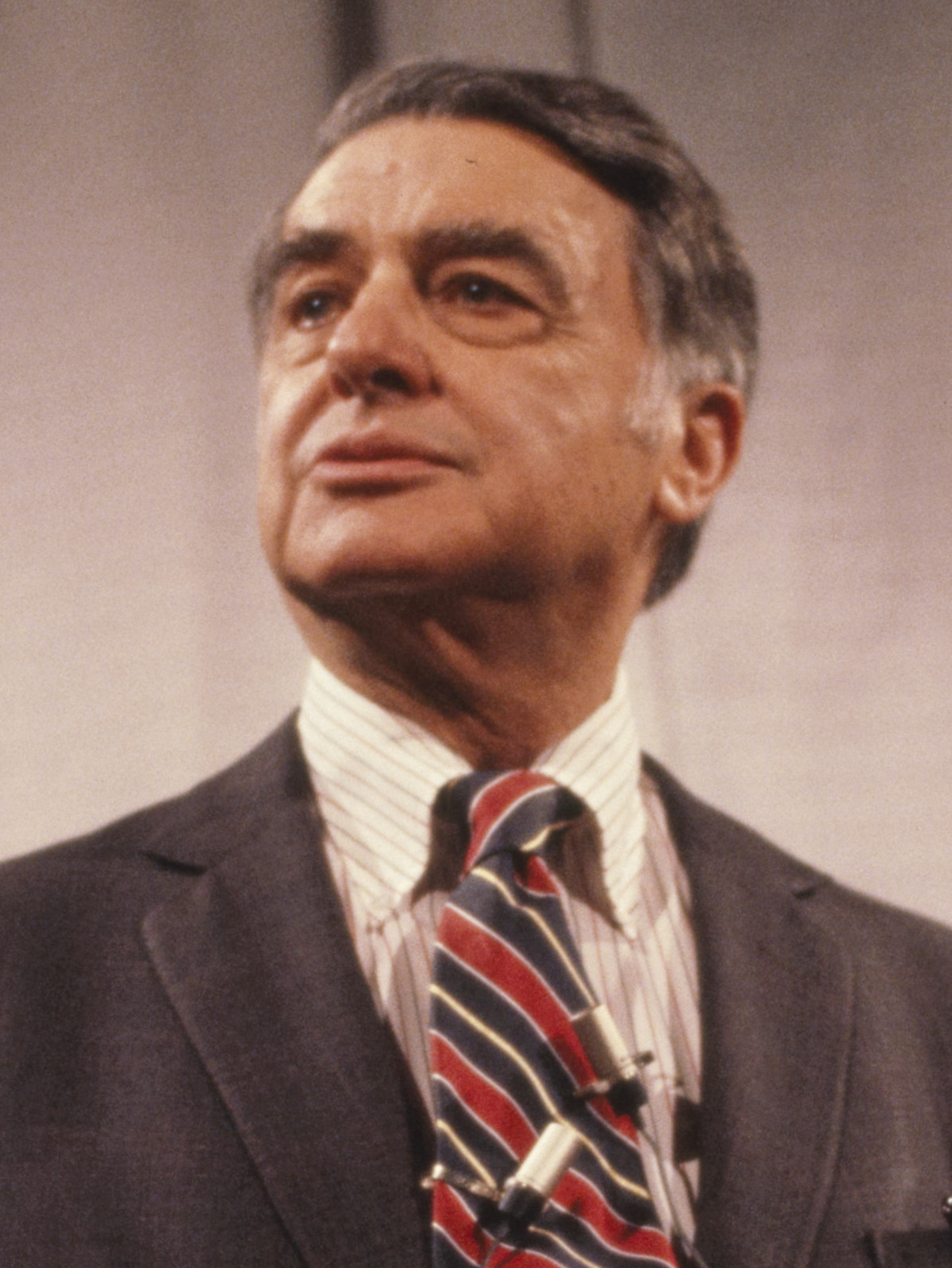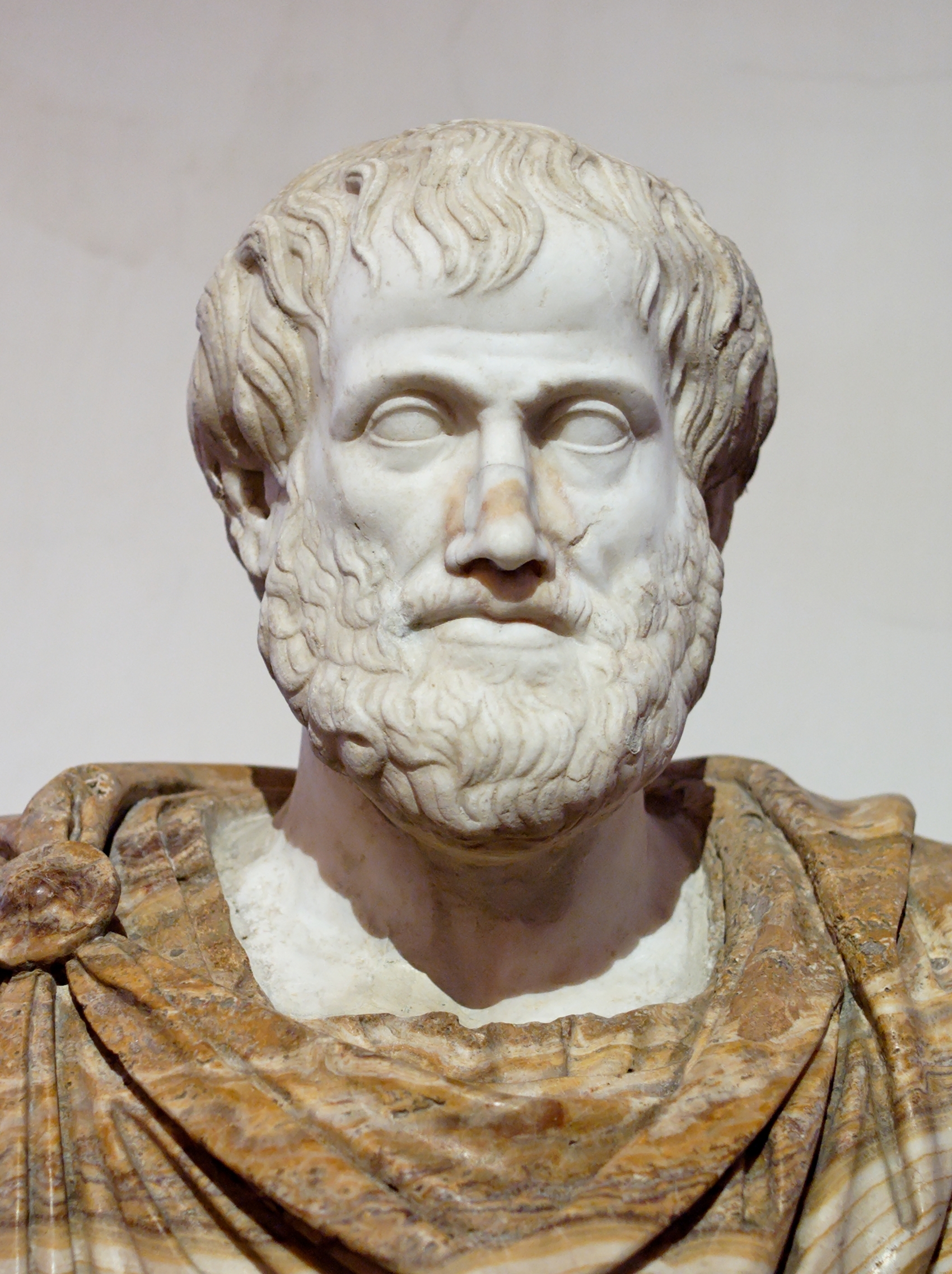The playwright Samuel Beckett won the Nobel Prize in Literature in 1969, largely because of his play Waiting for Godot (pronounced “Goh-doh,” with a silent “t”). Its plot follows two characters, Vladimir and Estragon, who are waiting by a tree for someone named Godot, hoping he will bring meaning or purpose to their lives. They talk, pass the time with small tasks, and meet a couple of other characters with whom they have meaningless conversations. Godot never shows up.
The irony is that nothing actually happens in the play, yet people watch it mesmerized and give it standing ovations. Why has it received such acclaim? Because in the characters who are doing nothing and waiting for this Godot figure, the audience recognizes, in every aimless minute of conversation, a whole day of their own life—a microcosm of their own existence.
Unlike the pair waiting for Godot, Don Quixote did not wait. Don Quixote, the iconic character from Miguel de Cervantes’ novel, is a man driven by his ideals of chivalry and justice. Believing himself to be a knight-errant, he sets out on grand quests to fight evil and defend the helpless. He is determined to change the world, even though much of what he encounters is an illusion—like his famous battle with windmills, which he mistakes for giants. Despite his noble intentions, his efforts are misguided, and he ultimately spends his life fighting imaginary battles, unable to make a real impact on the world around him.
So, who is right? Don Quixote, living in the illusion that he is fighting for good, taking action and striving for change, even if misguided? Or the pair waiting for Godot, doing nothing, hoping that someone or something will eventually come to their rescue?
Actually, neither is right, and there is a better way forward. Let’s see what Ayn Rand has to say about it through her protagonist in Atlas Shrugged:
Do not let your fire go out, spark by irreplaceable spark in the hopeless swamps of the not-quite, the not-yet, and the not-at-all. Do not let the hero in your soul perish in lonely frustration for the life you deserved and have never been able to reach. The world you desire can be won. It exists.. it is real.. it is possible.. it’s yours.
Examples from History
Throughout history, individuals who refused to “wait for Godot” have shaped our world. Unlike Vladimir and Estragon, they pursued their own values and ambitions. In doing so, they often faced opposition, ridicule, and seemingly insurmountable obstacles, yet persevered because they valued their vision and refused to compromise. Let’s examine some of these remarkable individuals across various fields:
In science and medicine:
- Ignaz Semmelweis
-
Ignaz Semmelweis discovered that doctors were spreading childbed fever through unwashed hands, pioneering antiseptic procedures decades before germ theory was accepted. His simple handwashing protocol reduced maternal deaths from 18% to 2%, potentially saving thousands of mothers and their babies. Despite this dramatic evidence, his ideas were rejected by the medical establishment, leading to his professional ostracism and eventual mental breakdown. His work on preventing disease transmission through hygiene practices later became fundamental to modern medicine.
Continue to wikipedia
- Michael Faraday
-
Born into poverty, Michael Faraday overcame his humble beginnings through self-education and determination to become one of history’s greatest physicists. His pioneering work in electromagnetism laid the foundation for modern electrical technology, making possible everything from electric motors and generators to modern transportation systems, telecommunications, medical imaging (MRI), computers, and even the internet technologies that form the backbone of our modern civilization.
Continue to wikipedia
- Isaac Newton
-
Isaac Newton revolutionized our understanding of the physical world through his theory of light, laws of motion and universal gravitation, while also transforming mathematics with his invention of Calculus. By his twenties, he had developed the theory of light, but faced rejection from the dogmatic British Royal Society. This setback led him to withdraw from public scientific discourse, keeping his work private until astronomer John Flamsteed persuaded him to publish his revolutionary ideas in Principia Mathematica. His discoveries now form the foundation of modern technology, from smartphones to space travel, making his work essential to our technological world.
Continue to wikipedia
- Sofia Kovalevskaya
-
Sofia Kovalevskaya defied the male-dominated academic world of her time, becoming the first woman to earn a doctorate in mathematics in Europe. Her groundbreaking work on partial differential equations and the “Kovalevskaya spinning top” in mechanics earned her recognition as one of the leading mathematicians of her era, and she became the first woman to hold a professorship in mathematics in Russia.
Continue to wikipedia
- Ludwig Boltzmann
-

Image source:
Uni Frankfurt, Public domain, via Wikimedia Commons
Ludwig Boltzmann was a physicist who advocated atomic theory, proposing that all matter consists of atoms. At that time, the majority of physicists rejected this theory. Despite facing ridicule and depression, he maintained his conviction until his suicide in 1906. Shortly after his death, his claims were vindicated and revolutionized our understanding of the microscopic world.
Continue to wikipedia
- Nikolai Vavilov
-
Nikolai Vavilov championed Mendelian genetics and the importance of genetic diversity in crop breeding, while opposing Trofim Lysenko’s Lamarckian theory that acquired traits could be inherited. In a society that demanded ideological conformity, Vavilov faced intense political, social, and professional pressure to abandon his scientific views. Despite threats of ostracism and persecution, he refused to recant, leading to his arrest and death in a Gulag labor camp. His work on plant genetics later proved crucial to modern agriculture, vindicating his unwavering commitment to scientific truth.
Continue to wikipedia
- Louis Pasteur
-
Louis Pasteur challenged widely accepted theories of spontaneous generation and humoral medicine. While most scientists believed life could arise from non-living matter and diseases were caused by imbalances in the body’s four humors (blood, phlegm, yellow bile, and black bile), Pasteur’s experiments proved that microorganisms cause disease. His development of vaccines for rabies and anthrax, along with the process of pasteurization, revolutionized medicine despite fierce opposition from the scientific establishment.
Continue to wikipedia
In engineering and business:
- Thomas Edison
-
Thomas Edison invented the electric light bulb that illuminated cities, the phonograph that brought music into homes, and motion pictures that created a new art form. Beyond inventing, he pioneered the commercialization of technology, building power plants to support his lighting system and creating markets for his innovations. His development of the first industrial research laboratory at Menlo Park transformed how innovation happens, making him one of history’s most prolific inventors with over 1,000 patents. Despite facing skepticism from established scientists and businessmen, his practical approach to invention and marketing helped create the modern technological world.
Continue to wikipedia
- John Rockefeller
-
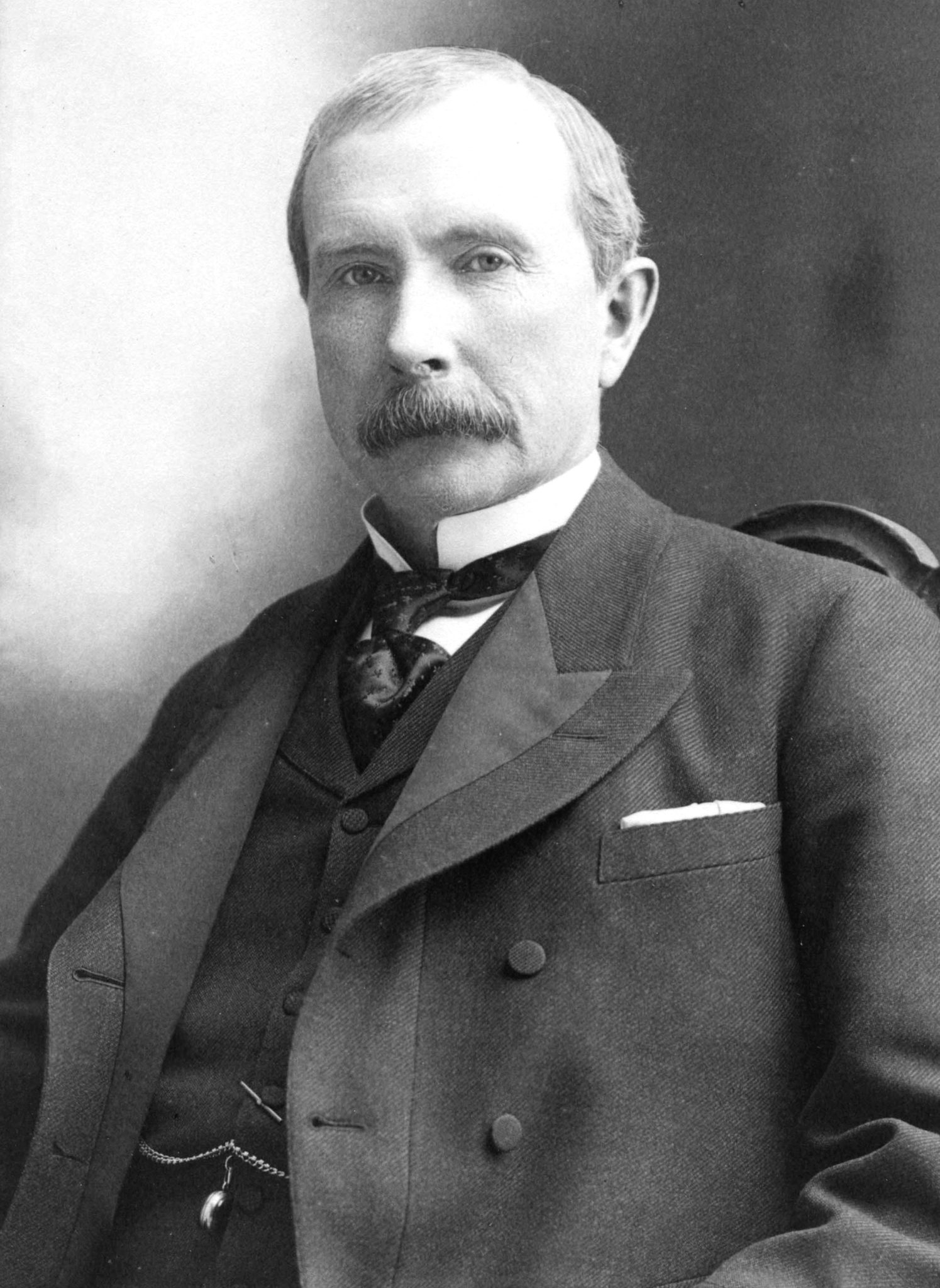
Image source:
Published by Scientific American Compiling Dep't, New York. 1907., Public domain, via Wikimedia Commons
John D. Rockefeller revolutionized the oil industry by finding ways to refine oil that others considered worthless. While most saw California’s thick, sulfurous oil as unusable, he invested in research to remove impurities and transform it into valuable products like kerosene. He created the first vertically integrated corporation, Standard Oil, which controlled every aspect of production from drilling to retail, while implementing unprecedented efficiency and quality control. His innovations in business organization, including the trust structure and systematic management, transformed how large corporations operate. Despite facing intense criticism and antitrust legislation, his methods proved so effective that they became the model for modern industrial organization.
Read more: Vindicating Capitalism: The Real History of the Standard Oil Company
- Wright brothers
-
Orville and Wilbur Wright revolutionized aviation, pursuing what most considered impossible. Despite being mocked by newspapers and dismissed by leading scientists who believed powered flight was a fantasy, they persisted through years of experimentation in their bicycle shop. Their methodical approach to solving the problems of lift, control, and propulsion led to the first powered, controlled flight in 1903, proving that human flight was not just possible but achievable through careful engineering and innovation.
Continue to wikipedia
Read more: A Study in Human Incredulity (Fred. C. Kelly, biographer)
- Nikola Tesla
-

Nikola Tesla arrived in the United States in 1884 with just four cents in his pocket and a letter of recommendation from Charles Batchelor, Thomas Edison’s associate, which read “I know two great men and you are one of them; the other is this young man.” He was immediately hired. From these humble beginnings, Tesla went on to revolutionize electrical power by challenging the industry’s established standard of direct current (DC). At a time when DC power was universally accepted and heavily invested in, Tesla championed alternating current (AC) as a superior solution. The media response was fierce: newspapers ran sensationalist stories about AC’s dangers, breathlessly reporting on demonstrations of its supposed lethality, and spreading fear through dramatic headlines and public statements. Despite this intense campaign of fear and misinformation, Tesla’s AC system prevailed in the “War of Currents,” becoming the global standard and laying the foundation for modern electrical infrastructure. Today, the AC power grid is so ubiquitous that we barely notice the network of wires that power our world, a testament to how completely Tesla’s vision transformed modern life.
Continue to wikipedia
- Edwin Armstrong
-
Edwin Armstrong revolutionized radio broadcasting by developing frequency modulation (FM) radio, which provided superior sound quality and static-free reception compared to the established AM radio. Despite facing fierce opposition from RCA and its powerful leader David Sarnoff, who had heavily invested in AM technology, Armstrong persisted in perfecting and promoting FM radio. His battle against industry resistance lasted decades, ultimately leading to his tragic suicide, though his technology would later become the standard for high-quality radio broadcasting.
Continue to wikipedia
- Edwin Land
-
Edwin Land revolutionized photography by inventing the Polaroid instant camera, challenging the established industry’s reliance on complex darkroom processes. Despite facing skepticism from both the photography industry and scientific community, who dismissed instant photography as impossible, Land persisted in perfecting his technology. His breakthrough not only transformed how people captured and shared moments but also demonstrated that seemingly impossible innovations could become reality through determination and scientific rigor. Notably, Steve Jobs cited Land as a major inspiration for his own innovative vision and approach.
Continue to wikipedia
- Steve Jobs
-

Image source:
Matthew Yohe, CC BY-SA 3.0, via Wikimedia Commons
Adopted by a family of modest means, Steve Jobs could barely afford his college education at Reed College. He rejected the computer industry’s focus on technical specifications, insisting that technology should be intuitive and beautiful. Despite facing resistance from his own employees and board members who doubted his vision, and being ousted from Apple in 1985, he revolutionized personal computing with the Macintosh’s graphical interface, transformed music distribution with the iPod, and redefined mobile phones with the iPhone. His uncompromising standards and focus on user experience made Apple the world’s most valuable company, proving that challenging industry norms could lead to revolutionary innovations.
Continue to wikipedia
In education:
- Maria Montessori
-
Maria Montessori revolutionized child education. As a young woman, she challenged the prevailing belief that women should not pursue higher education and became Italy’s first female physician. She developed a revolutionary approach to early childhood education, beginning her work with children considered “uneducable” in Rome’s asylums. Her observations and experiments there led to the creation of Casa dei Bambini in 1907, where she demonstrated that children from disadvantaged backgrounds could achieve remarkable academic success when given the right environment and materials. Her methods, initially met with skepticism, have since been adopted in over 20,000 schools worldwide, transforming early childhood education across the globe.
Continue to wikipedia
- Marva Collins
-
Marva Collins, a public school teacher in Chicago’s inner city, refused to accept the education system’s low expectations for disadvantaged students. Using her own modest savings to start a school in her home, she proved that children labeled as “unteachable” could excel in classical education. Her Westside Preparatory School, founded in 1975, achieved remarkable success with students who had been written off by the public school system, demonstrating that high expectations and traditional teaching methods could transform the lives of children from challenging backgrounds.
Continue to wikipedia
In politics:
- Winston Churchill
-
Winston Churchill opposed the establishment’s policy of appeasement toward Nazi Germany. When he became Prime Minister in 1940, Britain stood alone against the Nazi war machine, with many in his own government urging surrender. Despite facing overwhelming odds, internal opposition, and the devastating Blitz that destroyed much of London, he rallied the British people with his powerful oratory and unwavering resolve. His leadership during Britain’s darkest hour not only prevented a Nazi victory but helped forge the alliance that ultimately defeated fascism in Europe. Throughout his career, he also championed Zionism and the establishment of a Jewish state in Palestine, standing against both British and international opposition to this vision.
Continue to wikipedia
- Chaim Weizmann
-

Image source:
Government Press Office (Israel), CC BY-SA 3.0, via Wikimedia Commons
Born to a poor family in a small town near Pinsk, Belarus, Chaim Weizmann became a key figure in the establishment of Israel and a leading chemist. His graduate studies were in Switzerland, where he struggled to make ends meet, yet managed to excel. He made breakthroughs in the chemistry of dye, and sold it for a significant amount. At the university, he joined the Zionist movement and eventually became a leading voice in the movement. He strongly opposed Herzl’s proposal to settle Jews anywhere other than Palestine, an argument among Zionists that split the movement. After this ideological division, he moved to Manchester, England, where he had to learn English and establish himself from scratch. His choice of Manchester proved fortuitous as it was a center of scientific innovation, bringing him into contact with leading scientists like Rutherford while he developed his chemistry research. Simultaneously, he built crucial political connections with influential figures including Lord Balfour and Lloyd George, tirelessly advocating for a Jewish state. When the First World War broke out, his scientific breakthrough in acetone production proved vital to the British war effort. This contribution earned him the attention of the British government, ultimately leading to the historic Balfour Declaration of 1917, which established British support for a Jewish homeland in Palestine. He continued to play an important political role during the Mandate years, advocating for peaceful and diplomatic relations in Palestine between different parties. He also founded the Jewish Agency that helped fundraise money for settling Palestine. A key part of his vision was establishing Palestine as a center for world-class research. He founded the Hebrew University of Jerusalem and attracted leading researchers to work there, ensuring their work was published in prestigious technical journals. During World War II, he again contributed to the British war effort, developing innovations in synthetic rubber production for military tires.
Continue to wikipedia
Read more: Trial and Error
- Abraham Lincoln
-
Abraham Lincoln, born into poverty, self-educated himself into a lawyer, and became the 16th president of United States. He campagined against the political establishment of his time by challenging the institution of slavery. His election in 1860 triggered the secession of Southern states, leading to the Civil War. Through this crisis, he issued the Emancipation Proclamation in 1863 and pushed for the Thirteenth Amendment, which permanently abolished slavery. His leadership during America’s greatest crisis not only preserved the Union but transformed it into a nation dedicated to the principle that all men are created equal.
Continue to wikipedia
- Theodor Herzl
-

Theodor Herzl, fought to establish safety for Jews from racism. A Viennese journalist with no aristocratic or political status, and a man of modest financial means, he ambitiously campaigned for mass immigration of Jews into Palestine, in order to establish a national secular Jewish State. At just 36 years old, he transformed the ancient Jewish longing for return to Zion into a modern political movement. Despite facing opposition from both assimilationist Jews who feared his ideas would increase antisemitism and traditional religious leaders who saw Zionism as contradicting divine will, he published “The Jewish State” in 1896 and convened the First Zionist Congress in Basel the following year. In the span of just 8 years before his death at age 44, he established the movement’s official newspaper “Die Welt,” founded the Jewish Colonial Trust (later the Anglo-Palestine Bank), met with numerous heads of state including six audiences with the Sultan of the Ottoman Empire, and laid the foundation for the eventual establishment of Israel. His vision, initially dismissed as utopian by many, was carried forward by others and ultimately realized through the Balfour Declaration of 1917 and the establishment of the State of Israel in 1948.
Continue to wikipedia
Read more: Parallels Between Zionism and the Pursuit of a Free Society
- Martin Luther King Jr.
-
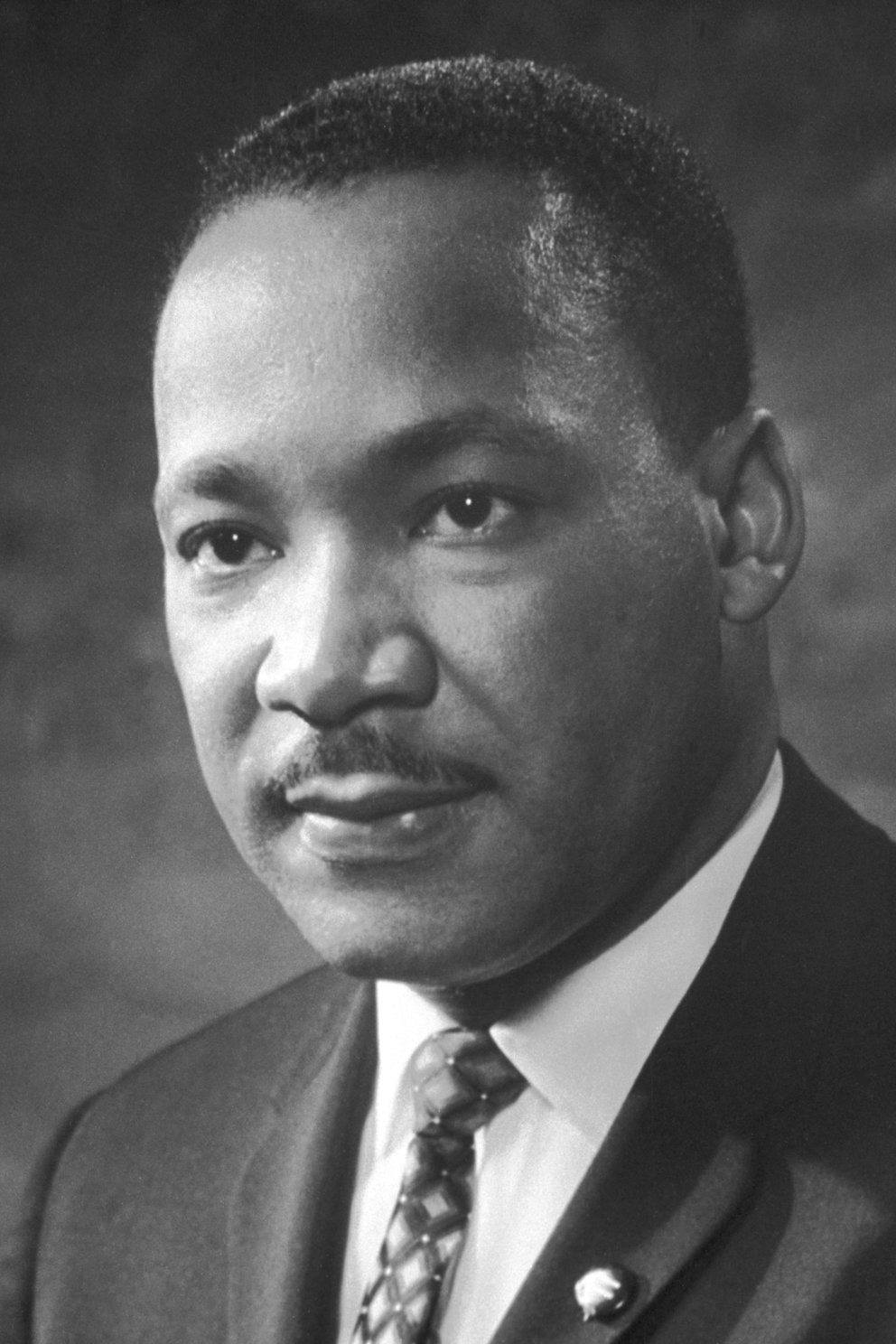
Martin Luther King Jr., a young Baptist minister with no political office or formal authority, lead a nonviolent revolution against government-imposed Jim Crow segregation laws. At just 26 years old, he emerged as the leader of the Montgomery Bus Boycott in 1955, after the city government arrested Rosa Parks for refusing to comply with its bus segregation laws that required black passengers to sit in the back and give up their seats to whites. The boycott, which lasted 381 days, transformed a local protest against government-mandated bus segregation into a national movement for civil rights. Despite facing violent opposition from segregationists, surveillance and harassment from the FBI, and criticism from both white supremacists and more militant black activists, he organized and led the March on Washington in 1963, where he delivered his iconic “I Have a Dream” speech. In the span of just 13 years before his assassination at age 39, he led numerous successful campaigns including the Birmingham campaign, the Selma to Montgomery marches, and the Chicago Freedom Movement, challenging state-enforced segregation laws across the South. His vision, initially dismissed as unrealistic by many, was carried forward by others and ultimately realized through the end of government-mandated segregation in public facilities and the Voting Rights Act of 1965, which removed state barriers to voting, transforming American society and inspiring civil rights movements worldwide.
Continue to wikipedia
- Natan Sharansky
-
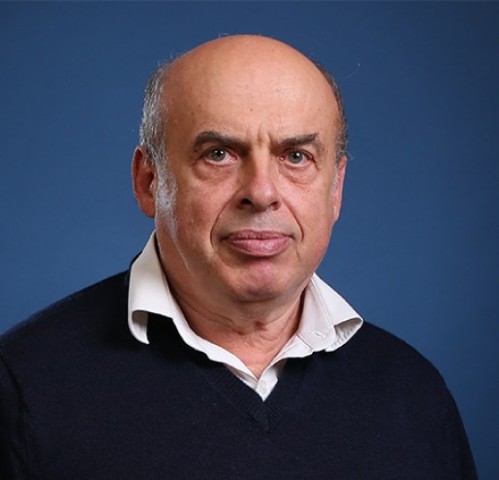
Image source:
Ram Mendel, CC BY-SA 4.0, via Wikimedia Commons
Natan Sharansky, a man of small stature (5'2"), defied the Soviet regime by fighting for the fundamental right of Jews to emigrate from the USSR. “The moment I was put in a punishment cell and started to sing Hebrew songs,” he said, “I understood that I was free.” Despite spending nine years in a Siberian prison, including long periods in a punishment cell where he endured freezing conditions and minimal food, he turned his isolation into strength through chess, playing thousands of games in his mind. “The KGB hoped that I would feel weaker and weaker mentally,” he recalled. “Actually I felt stronger and stronger.” His story demonstrates that a man need not accept the world as it is, that even in the face of overwhelming power, he can maintain his inner freedom and dignity.
Continue to wikipedia
Read more: Natan Sharansky: How chess kept one man sane
- Alexei Navalny
-

Image source:
YouTube/Навальный LIVE, CC BY 3.0, via Wikimedia Commons
Alexei Navalny, a lawyer and anti-corruption activist with no political office, exposed Russia’s government corruption and organized mass protests against the regime. At 33 years old, he started his anti-corruption blog in 2009, which grew into a movement that exposed billions of dollars in government corruption. Despite facing multiple arrests, physical attacks including a near-fatal poisoning in 2020, and constant surveillance and harassment from state security services, he organized the largest anti-government protests in Russia since the 1990s. In the span of just 14 years before his death in 2024, he created the Anti-Corruption Foundation, ran for mayor of Moscow in 2013 where he received 27% of the vote despite being barred from state media, and continued to expose corruption even while imprisoned. His movement, which the regime feared so much that it attempted to assassinate him, inspired a new generation of Russians to challenge government corruption and demand political freedom, demonstrating that even under an authoritarian regime, individual courage can spark a movement for change.
Continue to wikipedia
In music:
- Sergei Rachmaninoff
-
Sergei Rachmaninoff, a young Russian composer and pianist, rejected the nihilistic trends in art of his time, and composed deeply emotional and technically demanding works that celebrated beauty and human emotion. At just 19 years old, he premiered his First Symphony in 1892, but its harsh reception by critics and the public, combined with personal struggles, led to a three-year period of depression and creative block. Despite facing criticism from modernists who dismissed his romantic style as outdated and embraced atonal and experimental music that rejected traditional beauty, and the challenges of the Russian Revolution which forced him to leave his homeland, he composed some of the most beloved works in classical music.
Continue to wikipedia
- Alma Deutscher
-

Image source:
Hel-Ash, CC BY-SA 4.0, via Wikimedia Commons
Alma Deutscher, born in 2005, is a virtuoso violinist and pianist who began creating music at the age of 5. She rejected nihilistic trends in modern classical music by composing beautiful, melodic works that celebrate emotional expression and traditional harmony. “If the world is so ugly,” she asked, “then what’s the point of making it even uglier with ugly music?” At just 10 years old, she completed her first full-length opera, Cinderella, which premiered in Vienna to critical acclaim, despite facing criticism from modernists who dismissed her romantic style as outdated. Her commitment to creating emotionally expressive music in an era dominated by atonal and experimental compositions has inspired a new generation of listeners and demonstrated that beauty and melody can still resonate in contemporary classical music.
Continue to wikipedia
Read more: Alma Deutscher's website
In sports:
- Terry Fox
-
After losing his leg to cancer in 1977, Terry Fox refused to let his disability stop him. “I’m not a dreamer, and I’m not saying this will initiate any kind of definitive answer or cure to cancer,” he said, “but I believe in miracles. I have to.” With this conviction, he set out to run across Canada on an artificial leg, enduring constant pain to raise awareness and funds for cancer research. His Marathon of Hope covered 5,373 kilometers over 143 days before his cancer returned, but his determination had already inspired millions and transformed cancer research funding worldwide, demonstrating how one person’s refusal to accept limitations can change the world.
Continue to wikipedia
- Michael Jordan
-

Image source:
Keith Allison from Hanover, MD, USA, CC BY-SA 2.0, via Wikimedia Commons
Michael Jordan, born in 1963, revolutionized basketball through his relentless pursuit of excellence and his refusal to accept conventional limits. “I’ve failed over and over and over again in my life,” he said, “and that is why I succeed.” His six NBA championships with the Chicago Bulls, combined with his unprecedented athletic achievements and global cultural impact, transformed basketball into a worldwide phenomenon. Despite facing intense competition and physical challenges, Jordan’s commitment to pushing the boundaries of what was possible in sports inspired generations of athletes and redefined the meaning of athletic excellence.
Continue to wikipedia
In escaping oppression:
- Yeonmi Park
-

Image source:
Gage Skidmore from Surprise, AZ, CC BY-SA 2.0, via Wikimedia Commons
Yeonmi Park defied the North Korean regime by escaping at the age of 13, undertaking a harrowing journey through China and Mongolia to reach freedom. After witnessing her mother being raped by human traffickers and nearly dying in the Gobi Desert, she eventually made it to South Korea. Rather than remaining silent about her experiences, she chose to speak out, becoming one of the most prominent voices exposing the realities of life in North Korea.
Continue to wikipedia
- Viktor Belenko
-
Viktor Belenko, a Soviet fighter pilot, defied the Soviet regime by executing one of the most daring defections in Cold War history. In 1976, he flew his advanced MiG-25 fighter jet to Japan, revealing to the West the secrets of what was then considered the most sophisticated Soviet military aircraft. Despite knowing that such an act would mean never seeing his family again and facing the constant threat of Soviet retribution, he chose freedom over the constraints of the system he was born into.
Continue to wikipedia
In art and writing:
- Walt Disney
-
Walt Disney created “Steamboat Willie” (1928), the first cartoon with synchronized sound, “Snow White and the Seven Dwarfs” (1937), the first full-length animated feature, and Disneyland (1955), the first theme park with integrated storytelling. Despite industry experts calling sound in cartoons a “gimmick,” audiences rejecting feature-length animation as “impossible,” and bankers refusing to finance Disneyland as “too risky,” he mortgaged his house to finance “Snow White,” which earned $8 million during the Great Depression. His innovations in animation technology, including the multiplane camera that created three-dimensional depth in cartoons and Technicolor, established new standards in the entertainment industry.
Continue to wikipedia
- Ayn Rand
-
Ayn Rand was a writer who championed the Romantic literary style in an era dominated by naturalism. Nicknamed “The American” by her family in her last years in USSR for her attraction to freedom and rejection of communism, she left Russia in 1926 only to find that communist sympathies (“pinks” as she called them) had taken hold in America too. Her first novel, We the Living, faced publishing challenges due to its anti-communist themes. Later, despite facing rejection from 12 publishers for The Fountainhead - who claimed it was “too intellectual” and would never find readers - and receiving minimal advertising from its eventual publisher Bobbs-Merrill, the book became a phenomenon through word-of-mouth sales. Her refusal to compromise her literary style, even when it went against prevailing trends, eventually led to her works finding a passionate audience and securing her place in literary history. Today, her books have sold over 37 million copies worldwide.
Continue to wikipedia
Read more: Publishing "We the Living"
- J.K. Rowling
-

Image source:
Daniel Ogren, CC BY 2.0, via Wikimedia Commons
J.K. Rowling wrote “Harry Potter and the Philosopher’s Stone” (1997) while living on state benefits, facing rejection from 12 major publishers who called the manuscript “too long for children” and “too complex for young readers.” After Bloomsbury’s small children’s division accepted it with a £2,500 advance, the book became the first in a series that sold over 500 million copies worldwide, established a new standard for children’s literature, and created a publishing phenomenon that transformed the industry’s approach to young adult fiction. In 2020, despite facing widespread criticism, boycotts, and threats, she publicly rejected the Woke ideology.
Continue to wikipedia
In philosophy (ethics):
- Socrates
-

Image source:
Socrate du Louvre, Sting, CC BY-SA 2.5, via Wikimedia Commons
Socrates challenged the established order of Athens by teaching young men to question authority and think for themselves. Despite facing charges of “corrupting the youth” and “introducing new gods,” he refused to stop his public questioning of politicians, poets, and craftsmen. When sentenced to death in 399 BC, he rejected the opportunity to escape. His student Plato recorded his teachings, creating the Socratic method that became the foundation of Western philosophy and modern education.
Continue to wikipedia
- Aristotle
-
Aristotle challenged the dominant philosophical school of his time, founded by his own teacher Plato. In an era where Plato’s Academy was the intellectual authority and religious traditions still held sway, Aristotle rejected both the theory of ideal forms and supernatural explanations. He established his own school, the Lyceum, where he insisted that knowledge must come from observing the natural world. This radical shift laid the foundation for modern science, despite facing resistance from both philosophical and religious establishments.
Continue to wikipedia
- Ayn Rand
-
Ayn Rand developed a comprehensive philosophical system known as Objectivism, which emphasizes reason, individualism, and laissez-faire capitalism. Her philosophy, articulated through both fiction and non-fiction works, presents a vision of human life where the individual’s right to pursue their own happiness is the highest moral purpose. Through works like Atlas Shrugged and The Fountainhead, she challenged the dominant intellectual trends of her time, offering a systematic alternative to collectivism and altruism. Her ideas continue to influence political thought, economics, and philosophy, particularly in discussions about individual rights, free markets, and the role of government.
Continue to wikipedia
- Isaac Newton
-
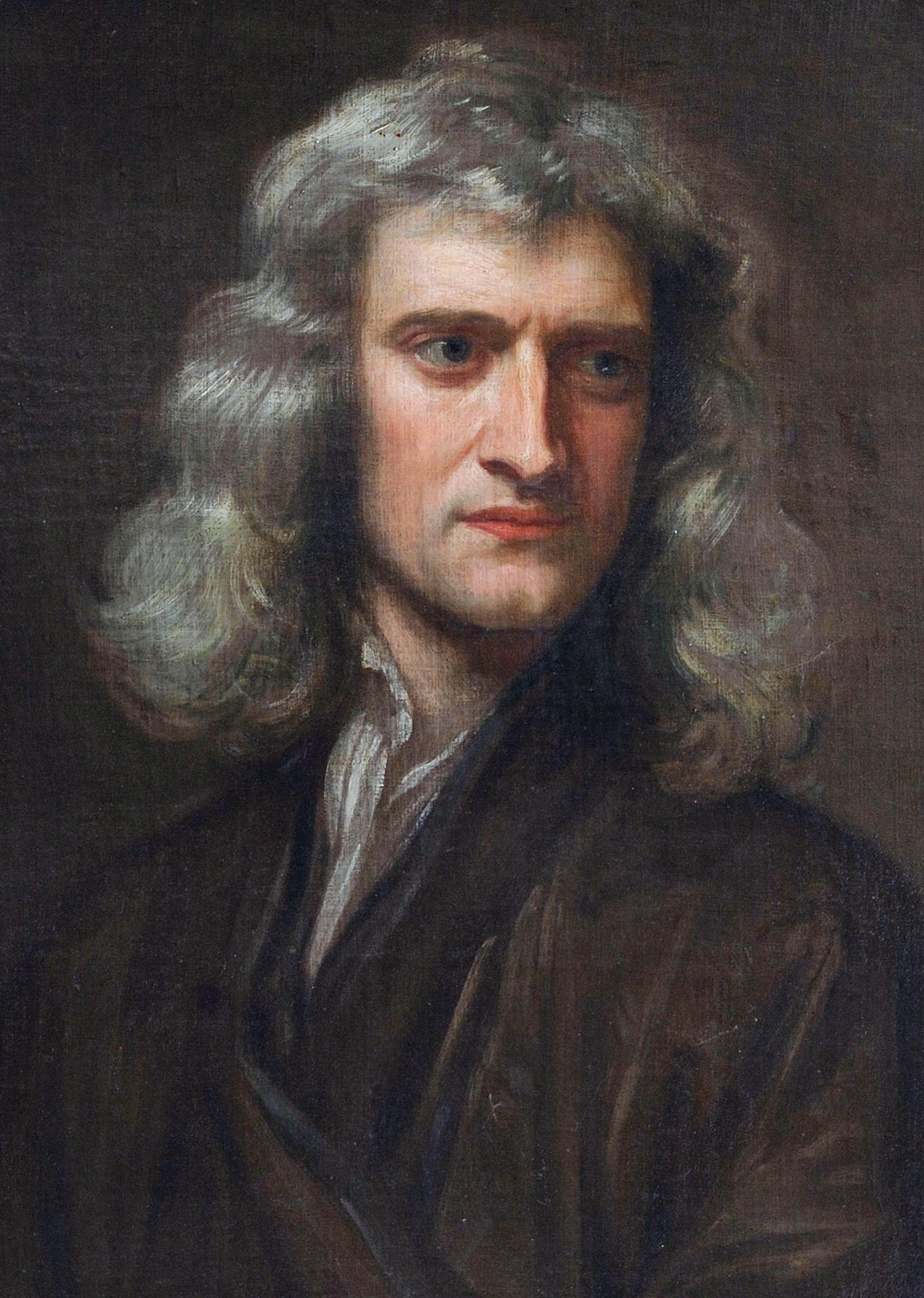
Image source:
Sir Godfrey Kneller, Public domain, via Wikimedia Commons
Isaac Newton revolutionized the philosophy of science by combining rigorous experimental method with inductive proof as the foundation of scientific knowledge. In an era dominated by Rationalist philosophy, where thinkers like Descartes believed truth could be discovered through pure reason and deduction, Newton demonstrated that general laws must be derived from specific observations and experiments. As a young man in his twenties, he built a superior reflecting telescope and conducted groundbreaking work on light, only to have it rejected by the Royal Society because his experimental approach contradicted established theories. After this early rejection, he withdrew from public scientific debate for years, focusing on his work in private. His approach, finally published in the 1687 “Philosophiæ Naturalis Principia Mathematica,” faced fierce opposition from Continental scientists who dismissed his experimental and inductive methods as inferior to pure reasoning. Despite this resistance, he established the experimental method and induction as the cornerstones of modern scientific methodology, showing that nature’s laws could only be discovered by moving from particular experiments to universal principles. This new approach to science would fundamentally change how we understand and interact with the natural world.
Continue to wikipedia
Examples from Fiction
Aristotle said that “poetry is finer and more philosophical than history; for poetry expresses the universal, and history only the particular.” Therefore, although there are actual real people that embodied individualism and success, it’s even more important to consider fictional symbols.
Many fictional characters, like Shakespeare’s Hamlet, Macbeth, and Romeo & Juliet, Raskolnikov, the Karamazov brothers, and Grenouille (from Patrick Süskind’s Perfume), ultimately fail in their attempts to defy societal constraints and achieve their goals. Their misguided efforts often lead to destruction and despair.
In contrast, there are other characters who show us that denying the status quo is far from futile.
Spoiler Alert: The following descriptions contain plot spoilers.
In folk tales and fantasy:
- Prometheus
-

Image source:
"Prometheus Brings Fire" by Heinrich Füger
Prometheus defied the absolute authority of Zeus by stealing fire from Mount Olympus and giving it to humanity. In an era where the gods demanded unquestioning obedience, he chose to empower humans with knowledge and the ability to shape their own destiny. For this act of rebellion, he was condemned to eternal torment, chained to a rock where an eagle would daily devour his liver. His story became a timeless symbol of the individual’s right to challenge authority and the pursuit of knowledge.
Continue to wikipedia
- Cinderella
-
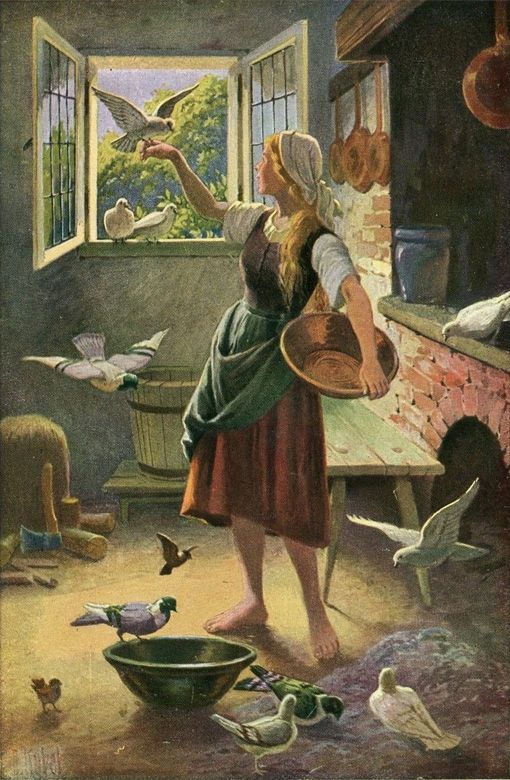
Image source:
Otto Kubel, via Wikimedia Commons
Cinderella defied her oppressive circumstances by refusing to accept her role as a servant in her own home. Despite being forced into servitude by her stepmother and stepsisters, she took pride in her work and performed it with excellence, refusing to let her circumstances diminish her standards. She maintained her dignity and seized the opportunity to attend the royal ball, using it as a chance to demonstrate her worth beyond her social status.
Continue to wikipedia
- Frodo Baggins
-
Frodo Baggins faced the same test as Gyges of Lydia, who used a ring of power to commit invisible acts of tyranny. Unlike Gyges, who merely became invisible, Frodo’s Ring not only granted invisibility but also exposed him to Sauron’s direct manipulation whenever he used it. The Ring had previously corrupted Gollum into a twisted creature and extended Bilbo’s life unnaturally, yet Frodo strategically used its invisibility to help his friends and save lives, while resisting its corrupting influence. His ability to maintain his purpose despite the Ring’s growing power and Sauron’s manipulation stood as a powerful argument against philosophical determinism, demonstrating that a person is not merely a function of his environment, as he chose to destroy the Ring rather than be defined by its influence.
Continue to wikipedia
In classics:
- Daniel Deronda
-

Daniel Deronda pursued his own interests with focused determination, choosing to uncover his origins and dedicate himself to the Jewish cause because it gave his life meaning and purpose. Despite the prevalent antisemitism in Victorian England, he followed his curiosity about his Jewish heritage without hesitation. Raised as a gentleman with a mysterious background, he could have maintained his comfortable position in English high society, but instead followed his own path, bringing Jews like Mirah, her brother Mordecai, and the musician Klesmer into his social circle without shame. His story stands in stark contrast to Gwendolen Harleth, who, despite being of higher social class and being in love with Daniel, came to realize that her character made her unworthy of him. She expected others to make sacrifices for her and ultimately sacrificed herself to her husband, while resenting Jews like Klesmer and Mirah, believing they had no place in her social class. While Gwendolen’s altruistic approach led to her entrapment, Daniel’s egoistic pursuit of his own interests allowed him to find his true identity and purpose. In the end, their different approaches reflected their fundamental views of the world: Daniel saw it as benevolent, while Gwendolen perceived it as malevolent.
Continue to wikipedia
- Gabriel de Montgommery
-

Image source:
dumaspere.com
In Alexandre Dumas’ novel The Two Dianas, Gabriel de Montgommery, an outsider at the French court, is a heroic proud individual who knew what he wanted and refused to be–in the terms of Ayn Rand’s “Fountainhead”–a second hander. In an environment that was unfair to him from every direction, he never succumbed but remained true to himself, standing by his principles. He refused to seek favor with the powerful, rejecting the queen’s advances out of honesty and pride for his love for Diana de Montpensier. He valiantly fought for Diana and his family’s honor.
Continue to wikipedia
- Jean Valjean
-

Image source:
Alphonse de Neuville, CC0, via Wikimedia Commons
In Victor Hugo’s Les Misérables, Jean Valjean’s story begins with his greatest struggle - the conflict within himself. Living in a society where many faced abject poverty under the oppression of government and aristocracy, he was imprisoned for stealing bread to feed his sister’s starving children. After his release, embittered by years of unjust treatment, he made another wrong choice - stealing silver from a bishop who had shown him kindness. But when the bishop in an act of disgusting alruism forgave him, it prompted Valjean to face a profound moral choice - to continue down the path of resentment or to forge a new path through his own will. His transformation was so complete that it shattered the worldview of Inspector Javert, who could not accept that a man could truly change his nature.
Continue to wikipedia
- Quasimodo
-
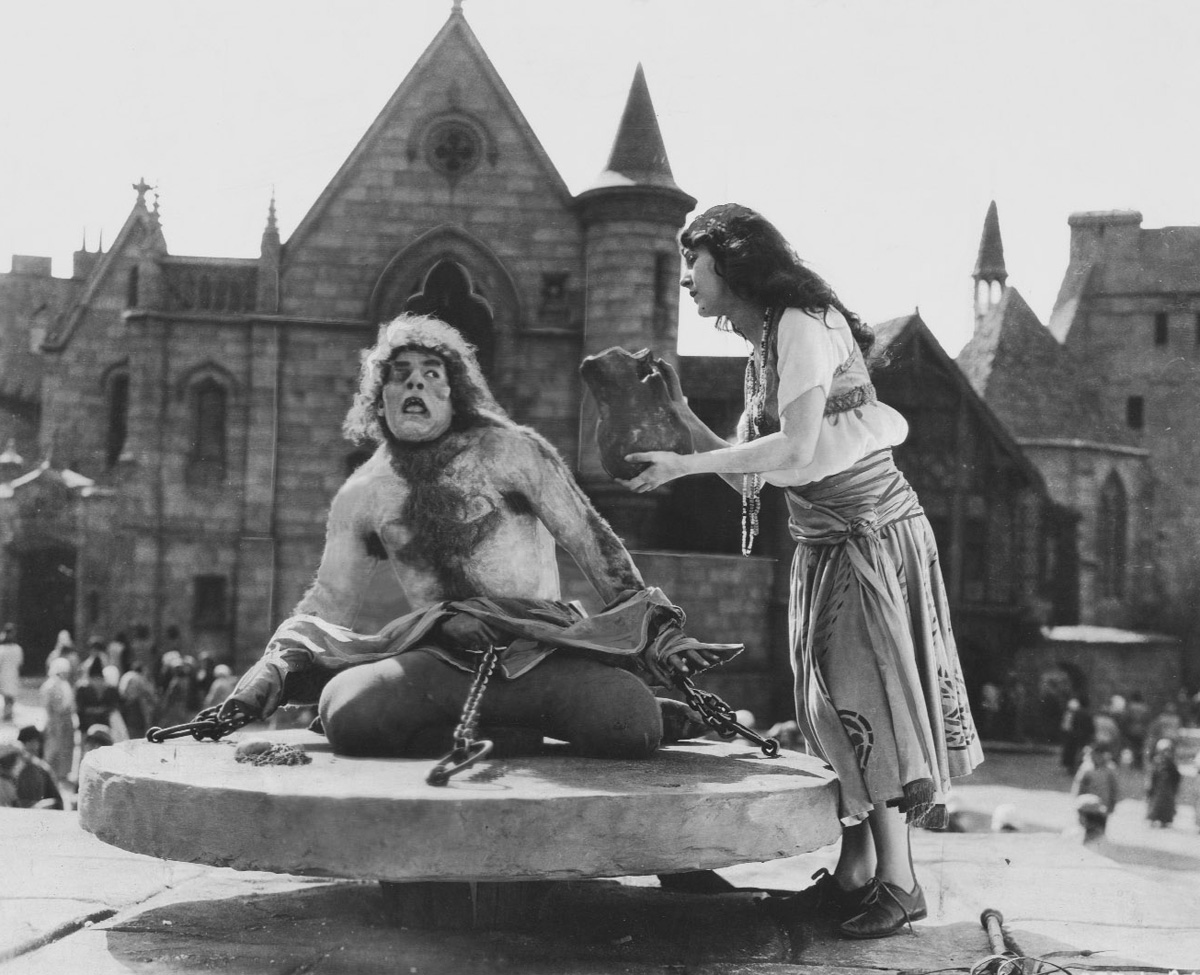
Image source:
1923 film adaptation
Quasimodo, the hunchbacked bell-ringer of Notre-Dame Cathedral, embodies the struggle between individual moral agency and societal control in medieval Paris, where the Catholic Church dominated morality and daily life. Despite being shunned for his deformities, he maintains a remarkable capacity for joy, love, and intellectual curiosity, finding solace in the bells of Notre-Dame and developing his own interests. His outlook starkly contrasts with his guardian, the archdeacon Claude Frollo: while Frollo, as a high-ranking church official, sees the world through dark colors of religious dogma and control, viewing humanity as inherently corrupt, Quasimodo embraces life’s beauty and possibilities. This contrast becomes the central conflict when Quasimodo falls in love with Esmeralda, a gypsy dancer whom medieval society viewed as a symbol of moral corruption. In loving her, Quasimodo not only defies the Church’s authority but rejects the entire value system of his time, choosing to see beauty where society saw only sin. His story represents the triumph of individual moral choice over manipulation and control, as he ultimately chooses to protect Esmeralda against his guardian’s wishes, demonstrating that true moral agency lies in the courage to follow one’s own compass, even when it means defying those who hold power.
Continue to wikipedia
- David Copperfield
-

Image source:
"David and Emily on the beach at Yarmouth", by Harold Copping.
David Copperfield, the central figure of Dickens’ most autobiographical novel, represents the triumph of human resilience in the face of adversity. Despite being dealt a difficult hand in life - a broken home, cruel stepfather, brutal schooling, and poverty - he demonstrates that circumstances need not determine one’s fate. After a happy early childhood with his mother, his life changes dramatically when she remarries the cruel Mr. Murdstone. Following her death, he is subjected to increasing hardship and cruelty, including being sent to a brutal boarding school. Yet, even in these difficult circumstances, he maintains his childlike innocence and tendency to see the world in benevolent colors, often struggling to comprehend others’ cruelty. This naivety, rather than being a weakness, becomes a source of strength as he finds moments of warmth and kindness, such as when he lives with the poor but generous Peggotty family in their converted boat-house in Yarmouth, where he witnesses the transformation of the constantly complaining Mrs. Gummidge about being “a lone lorn creetur”, who suddenly discovered her own strength and agency, teaching him the important to take life in one’s own hands. He also befriends the perpetually impoverished but ever-optimistic Micawber family. Through his own determination and unwavering moral principles, he educates himself and becomes a legal clerk, taking his first steps toward independence and a stable livelihood. His journey from hardship to self-sufficiency, while maintaining his cheerful nature, moral compass, and fundamental trust in human goodness, demonstrates that success in life depends not on one’s starting circumstances, but on the strength of one’s character, the clarity of one’s principles, and the determination to live by them.
Continue to wikipedia
In Ayn Rand’s novells:
- Equality 7-2521
-

Equality 7-2521, later known as Prometheus, embodies the eternal struggle between individualism and collectivism, representing the indomitable human spirit that refuses to be extinguished even in the most oppressive conditions. In a society that has erased the concept of “I” in favor of “we,” where personal identity is reduced to numbers and individual achievement is considered a sin, he demonstrates that the human drive for self-expression and independent thought cannot be fully suppressed. When he takes initiative to conduct research and makes a groundbreaking invention, the society rejects it out of blind adherence to tradition, punishing him for his independent thinking. Through his forbidden love for a young woman, he discovers that even the most basic human connections - the choice to love - are acts of egoism and individualism. Together wit his lover, he quits the dystopian society to find an abandoned house in the forest with classical books, where they begin building a new society, starting with just the two of them.
Continue to wikipedia
- Andrei Taganov
-

Image source:
1942 Italian adaptation "Noi Vivi"
Andrei Taganov is a man of unwavering principles, whose commitment to his ideals defines his entire character. He becomes a Communist not out of opportunism, but because he genuinely believes in its principles of collective good. It is precisely this principled nature that makes his story so powerful - when he falls in love with Kira Argounova, a woman who lives by her own independent values, he is forced to re-examine everything he believes in. His integrity won’t allow him to ignore the contradictions between his personal desires and the Party’s demands. This same principled commitment that once made him a dedicated Communist ultimately leads him to reject the Party when he sees its true nature.
Continue to wikipedia
- Kira Argounova
-

Image source:
1942 Italian adaptation "Noi Vivi"
Kira Argounova is a young woman who witnesses the establishment of Soviet Russia. While those around her either succumb to peer pressure and accept collectivist slogans or abandon their principles to become pragmatists in the name of “defying the system,” Kira stands alone in her rejection of collectivism and defense of individualism. Despite misery, hunger, food stamps, shortages of basic necessities, and the collectivist pressure to celebrate these hardships as virtues, she maintains a positive outlook and refuses to see the world in grey colors.
Continue to wikipedia
- Howard Roark
-

Image source:
1949 film adaptation with Gary Cooper as Roark
Howard Roark is an architect who embodies pure individualism, egoism and creative integrity. While others in his field compromise to please clients and follow tradition, he refuses to design anything that doesn’t express his own values. Even the Parthenon, revered as a masterpiece, is not beyond his critical evaluation - unlike second-handers who accept it as perfect because others do, he points out its flaws. His lover, friends, and colleagues warn him that the (social) reality is not ideal and that he must compromise or be broken. Despite facing financial ruin, public scorn, and professional sabotage, he proves them wrong.
Continue to wikipedia
- Hank Rearden
-
Hank Rearden, out of scientific and engineering drive, spends ten years developing Rearden Metal, a revolutionary alloy that is stronger, lighter and cheaper than steel. The society first mocks his invention as unsafe, but then hypocritically demands that he altruistically provide it. Even his family (particularly his wife) attempts to make him feel guilty for his achievements. Rearden senses that this is wrong, but not until he meets Dagny and Francisco does he begin to understand the nature of the opposition to him.
Continue to wikipedia
- Dagny Taggart
-
Dagny Taggart, from childhood, was driven by curiosity and a desire to understand how the world works. Together with her childhood friend Frisco she explored the world of engineering and technology, developing a deep appreciation for human achievement. But as an adult, when she and her brother James run an inherited railroad, she observes that people like her brother get by through manipulation and mooching off others rather than being creative and productive. Despite this, she fights to save the day. But should she?
Continue to wikipedia
Why Anthemism?
The idea behind Anthemism is the belief that if we want a better political society, we must build it ourselves from scratch. Trying to reform a large country is merely “waiting for Godot”—hoping for change without taking effective action ourselves.
It is true, that over the long term, things always get better. History is shaped by ideas, and in the end, good ideas prevail. After all, we are no longer cavemen. But, hey, it might take a thousand years. For example, it took about two hundred years for Rome to evolve into a theocracy, which then lasted for a thousand years. Only when Aristotle’s ideas were rediscovered did the Renaissance begin, signaling a new era of thought.
Those who are dissatisfied with the system, simply adapt and play along, believing things will eventually change for the better. But doing nothing allows the same problems to repeat, generation after generation. Our children will inherit the issues we fail to address today.
Enough waiting for Godot! The path forward isn’t passive waiting, nor is it fighting windmills like Don Quixote. If you’re ready to take action instead of waiting around, join the Anthemism project.







